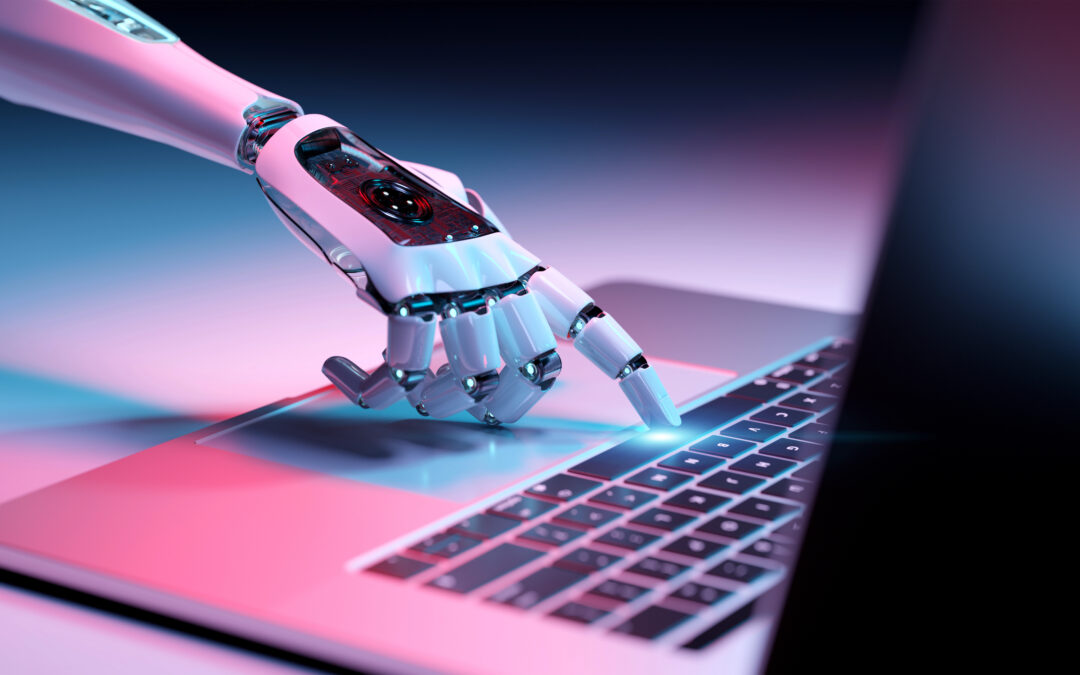AI is revolutionizing business operations. However, adopting AI without a robust cybersecurity strategy can introduce serious risks. Security vulnerabilities, compliance challenges, and data exposure can turn AI implementation from an asset into a liability. Businesses must take a strategic, security-first approach to AI adoption, ensuring alignment with cybersecurity frameworks to protect sensitive data and maintain operational integrity.
Unlocking AI’s Potential Without Compromising Security
For businesses eager to leverage AI, tools like Microsoft Copilot offer immediate operational improvements:
- Enhanced Email Management – AI streamlines email communication by summarizing conversations, drafting responses, and prioritizing urgent messages.
- Smart Scheduling and Automation – AI-driven scheduling tools optimize calendar management, reducing scheduling conflicts and improving efficiency.
- Data Analysis and Insights – AI can process large datasets, detect patterns, and generate real-time reports to support informed decision-making.
While these capabilities can enhance productivity, AI tools must be integrated thoughtfully. Businesses must assess their security posture before deploying AI across critical systems. Without the proper safeguards, AI could become a liability rather than a tool for growth. A secure foundation ensures that businesses extract the full benefits of AI while mitigating risks.
Securing AI Implementation from the Start
AI systems function based on data access and permissions. Without rigorous security controls, AI tools can inadvertently expose confidential information. Poorly configured AI applications may grant unauthorized access to financial records, employee data, or sensitive business intelligence.
Key security risks in AI adoption include:
- Unrestricted Data Access – AI can retrieve and surface information beyond intended permissions, leading to data exposure.
- Regulatory Non-Compliance – Mishandling protected data through AI-driven processes can violate industry regulations, resulting in legal and financial consequences.
- Unintended Data Leakage – AI-generated responses may include confidential details, posing a risk to business operations.
To mitigate these risks, organizations should implement:
- Role-Based Access Controls (RBAC) – Define precise access permissions to ensure only authorized users interact with AI-generated insights.
- Multi-Factor Authentication and Encryption – Strengthen security layers to protect AI interactions and sensitive business data.
- Data Governance Policies – Establish clear guidelines for AI’s data access and continuously monitor compliance to prevent security lapses.
Organizations must also consider the evolving nature of AI security threats. As AI becomes more sophisticated, cybercriminals find new ways to exploit vulnerabilities. Regular security updates and monitoring can help businesses stay ahead of these threats, ensuring AI remains a secure asset rather than a potential risk.
Building a Secure AI-Ready Infrastructure
Legacy IT environments may not support AI’s security and operational demands. Businesses relying on outdated, on-premise systems must modernize their infrastructure before implementing AI-driven workflows.
Steps for a secure AI transition:
- Migrate to a Secure Cloud Environment – Cloud platforms like Microsoft Azure offer built-in security controls and scalability for AI-driven automation.
- Unify Data Storage – AI performs best when accessing structured, well-organized data repositories with proper access controls.
- Conduct Security Audits – Regular evaluations ensure AI adoption aligns with compliance standards and mitigates potential vulnerabilities.
- Ensure AI Integration with Existing Security Policies – AI solutions should align with current cybersecurity frameworks to avoid introducing gaps in protection.
- Implement Continuous Monitoring and Threat Detection – AI applications should be integrated with real-time security monitoring systems to detect and mitigate threats proactively.
Failing to address infrastructure challenges before AI deployment can lead to inefficiencies, security breaches, and compliance risks. A business must ensure its technology stack is AI-ready, balancing innovation with security to maintain a seamless and protected environment.
Avoiding Common AI Adoption Mistakes
The rapid adoption of AI without a structured strategy can expose businesses to preventable threats. AI is not a plug-and-play solution—it requires a thoughtful approach to maximize benefits while safeguarding operations.
Best practices for secure AI adoption:
- Define AI Use Cases with Security in Mind – Identify AI applications that align with business needs and ensure security measures are in place.
- Develop an AI Risk Management Framework – Establish security policies to monitor AI performance and safeguard against unintended data access.
- Educate Employees on AI Security Risks – Train teams on AI usage best practices to prevent errors that could lead to breaches.
- Perform Regular AI Security Audits – Ongoing assessments should be conducted to ensure AI tools remain compliant with regulatory standards and business security policies.
- Limit AI Access to Necessary Data – Restrict AI’s reach within the organization to prevent unnecessary data exposure and reduce risk.
TeleGlobal’s AI security approach focuses on:
- Strategic AI Integration Plans – Tailored roadmaps ensure AI implementation aligns with security best practices and business objectives.
- Security-First AI Deployment – Infrastructure, data access, and security controls are optimized before AI is introduced into business workflows.
- Continuous AI Security Monitoring – Ongoing assessments refine AI strategies, ensuring efficiency and security remain top priorities.
Adopt AI the Right Way with TeleGlobal
AI offers game-changing potential, but only when implemented securely. Businesses that rush into AI adoption without a cybersecurity foundation risk exposing sensitive data, violating compliance regulations, and damaging their reputation. A secure AI strategy requires careful planning, robust security controls, and expert guidance.
Cybersecurity and AI adoption are not separate initiatives; they must be addressed together. A business cannot afford to embrace AI while leaving security as an afterthought. The right approach ensures AI strengthens productivity without jeopardizing business integrity.
TeleGlobal specializes in secure AI integration, helping businesses unlock AI’s benefits without compromising cybersecurity. A security-first approach ensures AI implementation strengthens productivity while safeguarding data integrity. With expertise in risk management, compliance, and AI security best practices, TeleGlobal enables businesses to confidently adopt AI without introducing vulnerabilities.
Frequently Asked Questions
Why is cybersecurity important when adopting AI?
AI relies on vast amounts of data, and without proper security measures, businesses risk data breaches, compliance violations, and unauthorized access to sensitive information.
What are the biggest security risks associated with AI adoption?
Key risks include data exposure due to weak access controls, AI-driven automation mistakes, compliance violations, and vulnerabilities that cybercriminals can exploit.
How can businesses ensure AI does not expose confidential data?
Businesses should implement role-based access controls, encryption, multi-factor authentication, and continuous monitoring to prevent unauthorized access and data leaks.
What cybersecurity measures should be in place before adopting AI?
Organizations should establish strong identity and access management (IAM), conduct security audits, implement robust encryption protocols, and align AI adoption with existing compliance frameworks.
How can AI be integrated into business operations without compromising security?
AI adoption should be phased, starting with low-risk use cases while ensuring proper governance, security configurations, and user training before scaling across the organization.
What industries face the most cybersecurity challenges when implementing AI?
Industries handling sensitive data—such as finance, healthcare, legal services, and government—must take extra precautions to secure AI-driven processes and ensure regulatory compliance.
What role does cloud security play in AI adoption?
Since many AI solutions run on cloud platforms, businesses must implement strong cloud security practices, including secure API management, data encryption, and multi-layer authentication.
How can businesses prevent AI from unintentionally accessing or sharing sensitive information?
AI models should be trained with strict data access rules, and companies should establish policies that limit AI’s ability to retrieve or process certain types of sensitive data.
What are best practices for securely managing AI-generated data?
Best practices include classifying and tagging AI-generated data, restricting access based on user roles, and continuously auditing how AI interacts with business-critical information.
How can businesses monitor and manage AI-related security threats?
Implementing real-time security monitoring, using AI-driven threat detection tools, and maintaining cybersecurity awareness training can help businesses stay ahead of AI-related risks.






